Looking for a way to consume written information without having to read a word? If yes, text-to-speech apps should be the ideal choice. With these iPhone apps, it is easy to convert text-based content into spoken words, so you can easily ingest information while doing something else or help those with reading or speaking disabilities.
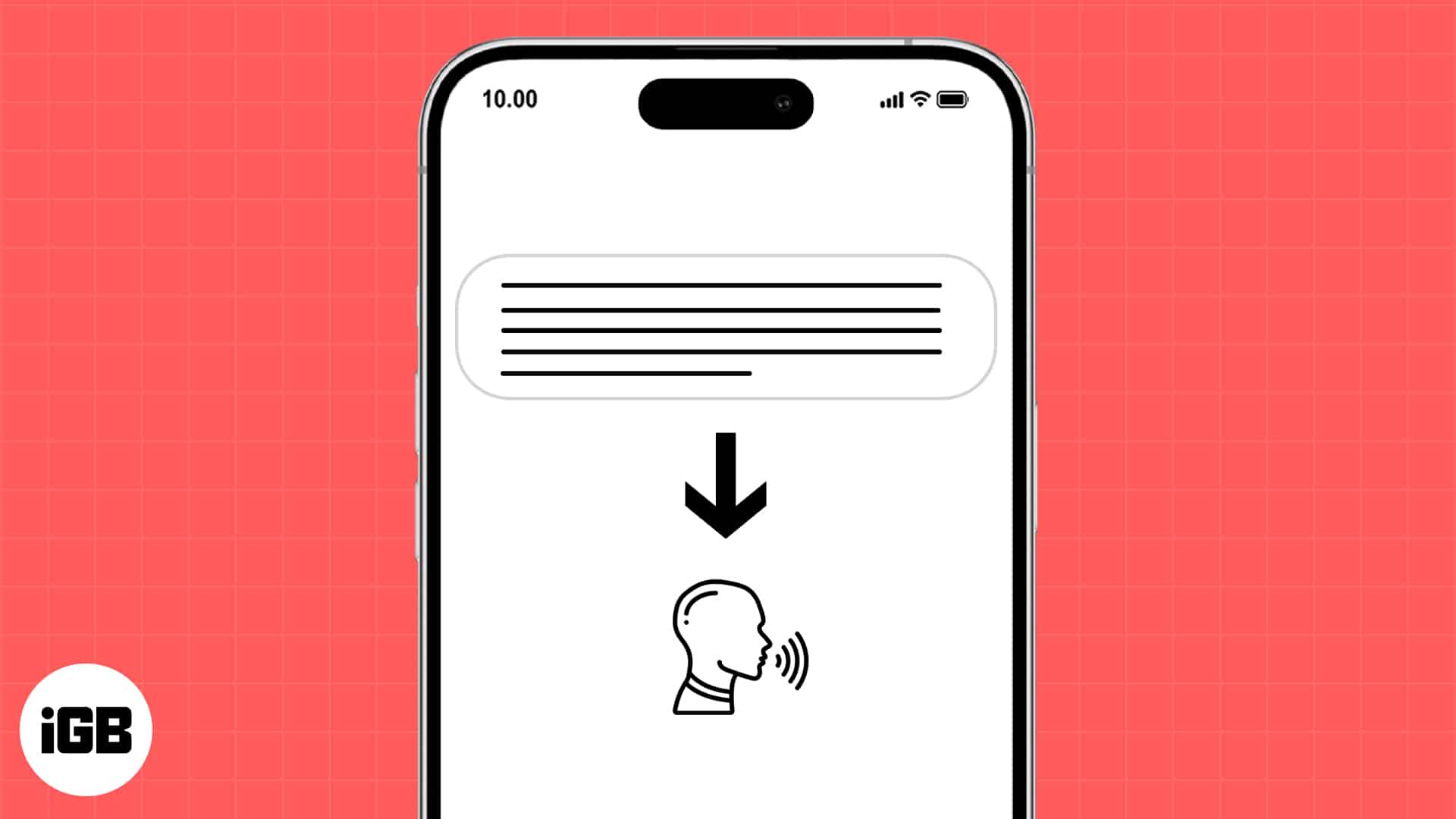
Although several text-to-speech apps perform the same function, it’s easy to get confused when choosing the right one. Here’s a comprehensive list of top-rated apps that offer exceptional text-to-speech services, each with pros and cons.
1. Peech Text to Voice Reader – Listen to articles and docs
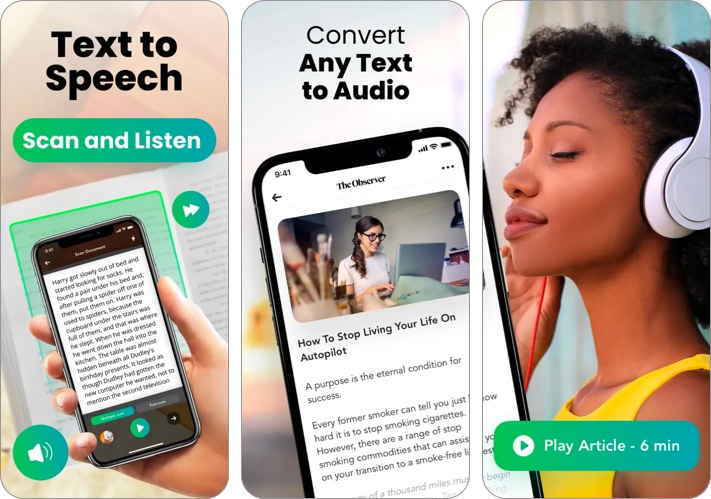
Peech is among the most powerful text-to-voice reader apps available on the App Store. With its intuitive user interface, you can quickly scan printed pages, import several types of document formats, or paste text directly into the app and have it converted into real-sounding speech almost instantly.
With over 60 supported languages and a vast library of realistic-sounding voices, Peech offers an excellent way to convert any text into spoken words. It also lets you customize the reading speed of the voices for more control.
If these features aren’t enough, the premium subscription of Peech also lets you have access to millions of news articles and other written content from over 60+ publications in one place, truly making it an all-rounder app.
Pros
- Offers a variety of realistic-sounding voices
- It has an intuitive user interface
- Offers access to articles from 60+ publications
Cons
- The free version doesn’t offer the ability to change voices
- It doesn’t support text highlighting while listening
Price: Free (In-app purchases start at $3.99)
2. NaturalReader Text To Speech – 140+ AI-powered voices
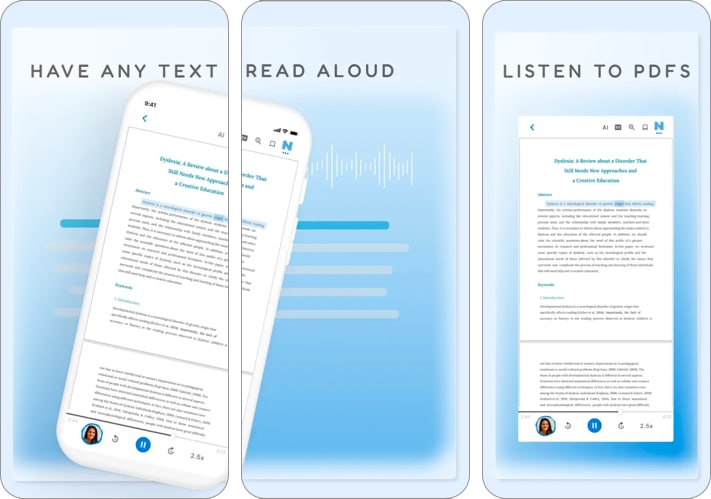
NaturalReader is yet another text-to-speech app that can read a variety of content aloud, including PDFs, online articles, and cloud documents. It has over 140 AI-powered voices available in more than 25 languages and dialects, so users can choose the voice that sounds best.
NaturalReader also offers a handful of innovative features, like capturing physical books or notes using your iPhone or iPad’s camera and converting them into audio. It also has a text filtering feature that intelligently filters out distracting text elements, such as URLs and text within brackets.
NaturalReader is a versatile text-to-speech app that can be used for a variety of purposes. Whether you want to listen to your favorite books, improve your productivity, or assist individuals with reading difficulties, NaturalReader is a powerful tool that can help you achieve your goals.
Pros
- Features a very minimal user interface
- Offers text-highlighting while listening
- Offers 140+ AI-powered voices
Cons
- Only supports a limited number of languages
- Lacks support for dark mode
Price: Free (In-app purchases start at $9.99)
3. Speechify Text to Speech Audio – Read aloud web, docs & PDF
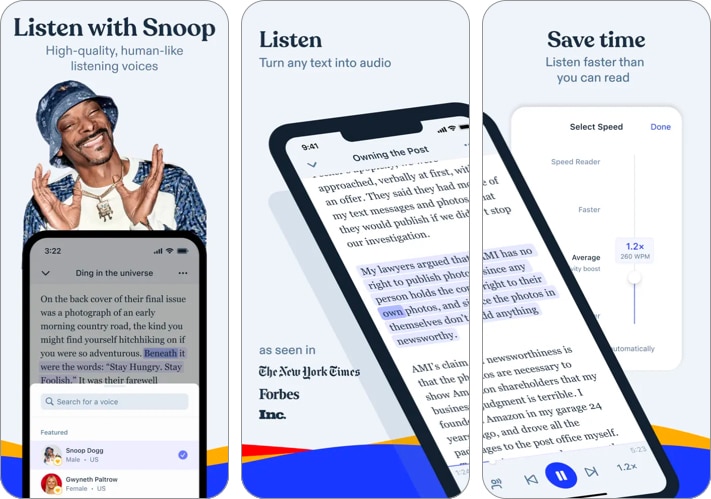
Speechify is a great text-to-speech app that allows you to listen to various types of content, including documents, articles, PDFs, emails, and more. It has over 20 million users and is the highest-rated TTS app on the App Store.
One of Speechify’s best features is that it allows you to select from a diverse range of celebrity and high-quality AI voices. Additionally, it has OCR capability, so you can transform any images with text into audio. You can also adjust the playback speed of the selected voice to your liking.
Speechify’s versatility is further enhanced by its Safari extension, which lets you listen to any website you visit. The app also offers access to hundreds of timeless audiobooks, so you can listen to your favorite books on the go.
Speechify is committed to accessibility and is a valuable tool for individuals with dyslexia, ADHD, and other reading disabilities. It is also a great tool for auditory learners, productivity enthusiasts, and second language learners.
Pros
- Offers access to 50,000+ actor-narrated audiobooks
- Offers a dedicated Safari Extension
Cons
- Changing narration speed requires a subscription
- Only offers annual subscriptions
Price: Free (In-app purchases start at $7.99)
4. Text to Speech: Audio Books – Photo reader
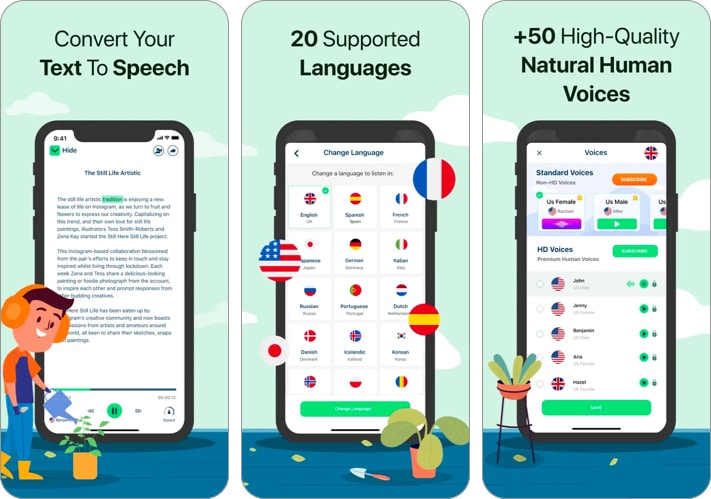
Text To Speech: Audio Book is a powerful yet user-friendly app that converts text-based content into engaging audio experiences. It integrates well with popular file-sharing platforms and supports OCR, so you can easily import and convert text from PDFs, eBooks, and even handwritten notes.
Besides offering precise control over the narration speed, the app also lets you create folders to organize your imported text. This makes finding and listening to your content easy, whether on the go or multitasking.
Text To Speech: Audio Book is a simple tool that offers functionality and efficiency rather than the number of features. It delivers on its promise of transforming any text into high-quality spoken words without overwhelming its users with unnecessary bells and whistles.
Pros
- Offers precise control over the narration speed
- Allows creating folders to keep imported text organized
- Focuses on functionality
Cons
- The free version doesn’t allow users to switch voices
- It’s powered by ads, and the interface feels a bit clunky
- Lacks support for dark mode
Price: Free (In-app purchases start at $5.99)
5. Speech Air Text to Speech – Create audiobooks
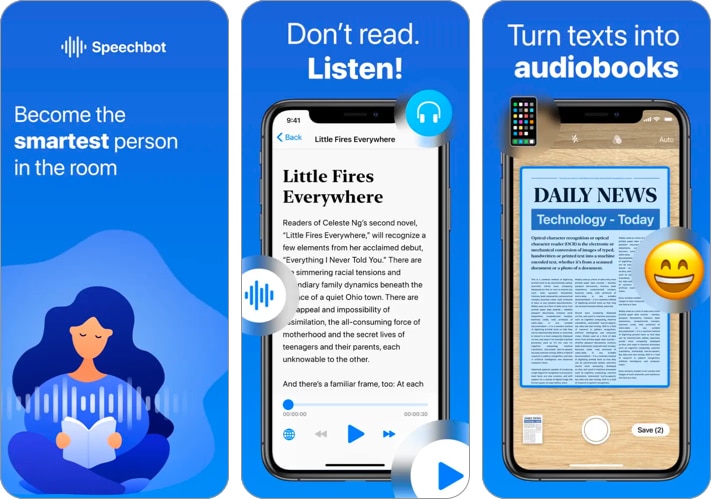
Speech Air – The text-to-speech app revolutionizes the way you take notes and access your written content. It offers seamless integration of note-taking capabilities, a familiar user interface, interactive widgets, and powerful OCR tools in a single package.
You can easily capture your ideas, musings, and reminders thanks to Speech Air’s intuitive note-taking feature. You can then listen to your notes later, allowing you to stay productive on the go. Plus, the app’s user interface is designed to be familiar and simple, making it easy to navigate and use.
With Speech Air, extracting text from any images or printed documents has never been easier. Thanks to its Optical Character Recognition (OCR) tools, you can just snap a photo or import an image, and Speech Air will instantly convert the text into speech.
If these features aren’t enough, Speech Air also supports interactive Home screen widgets that provide a quick and convenient way to access its built-in news reader or your existing projects. With just a tap, you can instantly dive into your favorite articles or start a new project. The app also offers iMessage stickers so you can express yourself during conversations.
Pros
- Offers easy access to articles from several publications
- Offers a built-in translator and Home Screen widgets
- Supports both light and dark modes
Cons
- Most features require a subscription
- Only a couple of free voices sound decent
Price: Free (In-app purchases start at $4.99)
6. Speech Assistant AAC – Designed for people with disabilities
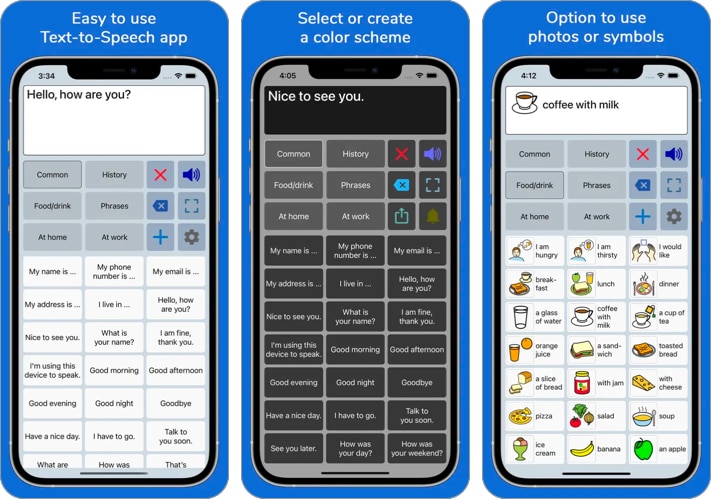
Speech Assistant AAC is an advanced text-to-speech application explicitly designed for individuals with communication challenges. It is an efficient Augmentative and Alternative Communication (AAC) tool that allows users to express their thoughts by converting written text into spoken words.
Speech Assistant AAC offers a vast array of accessibility features, including phrase prediction, customizable sentence building, and symbol-based communication. These features make it an exceptional app for communicating effectively and independently.
Pros
- Designed with accessibility in mind
- Offers powerful AAC features for improved communication
- Supports symbol-based communication
Cons
- Not suitable for general text-to-speech needs
- Advanced features may have a steep learning curve
- Slightly expensive
Price: $21.99
Wrapping up…
Whether you’re looking for an app to convert written text into spoken words or a specialized tool for accessibility and communication, these six text-to-speech apps for iPhone and iPad should have you covered. Go ahead, try them out, and let us know which app you found to be the most useful.
If you don’t find these apps helpful enough or don’t like using third-party apps, you will be better off using your iPhone or iPad’s Speak Selection functionality for general uses or Live Speech for accessibility-related uses.
Also read:

